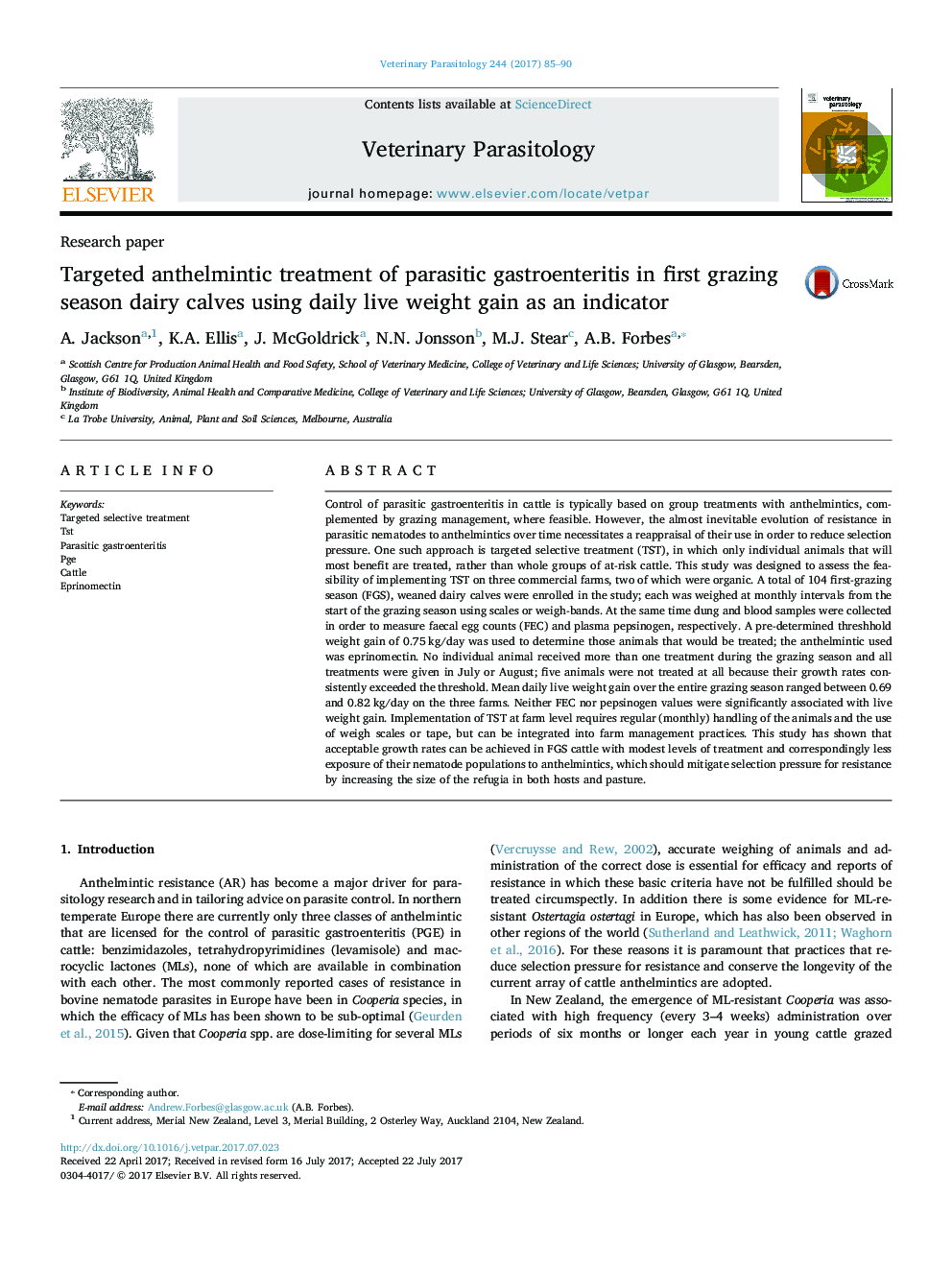| کد مقاله | کد نشریه | سال انتشار | مقاله انگلیسی | نسخه تمام متن |
|---|---|---|---|---|
| 5545552 | 1555632 | 2017 | 6 صفحه PDF | دانلود رایگان |
عنوان انگلیسی مقاله ISI
Targeted anthelmintic treatment of parasitic gastroenteritis in first grazing season dairy calves using daily live weight gain as an indicator
ترجمه فارسی عنوان
درمان موثر انترولمینتیک گاستروآنتریت انگلی در اولین دوره شیردهی با استفاده از وزن روزانه وزن زنده به عنوان یک شاخص
دانلود مقاله + سفارش ترجمه
دانلود مقاله ISI انگلیسی
رایگان برای ایرانیان
کلمات کلیدی
موضوعات مرتبط
علوم زیستی و بیوفناوری
علوم کشاورزی و بیولوژیک
علوم دامی و جانورشناسی
چکیده انگلیسی
Control of parasitic gastroenteritis in cattle is typically based on group treatments with anthelmintics, complemented by grazing management, where feasible. However, the almost inevitable evolution of resistance in parasitic nematodes to anthelmintics over time necessitates a reappraisal of their use in order to reduce selection pressure. One such approach is targeted selective treatment (TST), in which only individual animals that will most benefit are treated, rather than whole groups of at-risk cattle. This study was designed to assess the feasibility of implementing TST on three commercial farms, two of which were organic. A total of 104 first-grazing season (FGS), weaned dairy calves were enrolled in the study; each was weighed at monthly intervals from the start of the grazing season using scales or weigh-bands. At the same time dung and blood samples were collected in order to measure faecal egg counts (FEC) and plasma pepsinogen, respectively. A pre-determined threshhold weight gain of 0.75Â kg/day was used to determine those animals that would be treated; the anthelmintic used was eprinomectin. No individual animal received more than one treatment during the grazing season and all treatments were given in July or August; five animals were not treated at all because their growth rates consistently exceeded the threshold. Mean daily live weight gain over the entire grazing season ranged between 0.69 and 0.82Â kg/day on the three farms. Neither FEC nor pepsinogen values were significantly associated with live weight gain. Implementation of TST at farm level requires regular (monthly) handling of the animals and the use of weigh scales or tape, but can be integrated into farm management practices. This study has shown that acceptable growth rates can be achieved in FGS cattle with modest levels of treatment and correspondingly less exposure of their nematode populations to anthelmintics, which should mitigate selection pressure for resistance by increasing the size of the refugia in both hosts and pasture.
ناشر
Database: Elsevier - ScienceDirect (ساینس دایرکت)
Journal: Veterinary Parasitology - Volume 244, 15 September 2017, Pages 85-90
Journal: Veterinary Parasitology - Volume 244, 15 September 2017, Pages 85-90
نویسندگان
A. Jackson, K.A. Ellis, J. McGoldrick, N.N. Jonsson, M.J. Stear, A.B. Forbes,
